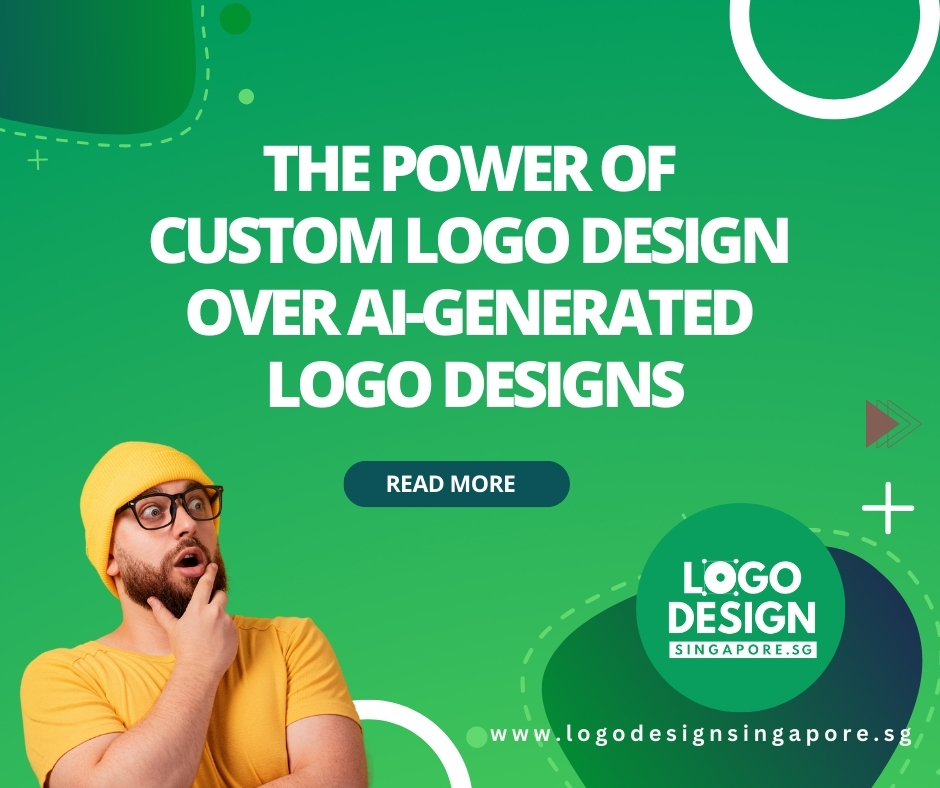Unveiling the Power of Custom Logo Design Over AI-Generated Logo Designs
Establishing a memorable and distinctive brand identity is very important in this competitive business environment. The logo stands at the forefront for visual representation, and a robust logo design that encapsulates a brand essence is more crucial. As always, first impressions matter, and failing to make a good impression in this competitive environment costs business. The logo stands as a business representation across various mediums. Custom logo design emerges as a critical element in grabbing the target audience’s attention and promoting brand recognition. When you hire a logo designer for your custom logo design, the process a logo designer follows to create your brand involves a thoughtful blend of creativity, strategy, and a deep understanding of the brand’s personality. This blog explores why custom logos matter in the broader context of brand building and how investing in professional logo design can significantly impact a company’s success and longevity. We will uncover the various benefits of a bespoke visual identity, surpassing mere aesthetics to become a cornerstone of effective brand communication and consumer trust. Join us on this insightful journey as we unweave the multifaceted reasons why a custom logo is an artistic indulgence and a strategic necessity in the ever evolving domain of business and marketing.

Table of Contents
Custom Logo Design
A professional custom logo design serves as the face of a brand, a visual image of its values, personality, and aspirations. Crafting a unique and impactful logo requires a detailed process blending artistic flair and strategic thinking. From conceptualization to final execution, the custom logo design process is a journey that unfolds in several stages, each demanding attention to detail and a deep understanding of the brand’s identity.
Logo Design Process
Requirement Analysis & Discovery
The logo design process commences with an in-depth exploration of the brand’s identity. Designers engage in conversations with business owners, study brand values, and engage in the company’s ethos. This phase is crucial for understanding the business’s core values, target audience, and unique selling propositions. The insights gathered during this discovery phase lay the foundation for the visual representation that the logo will convey.
Research and Inspiration
Once the requirements are gathered, logo designers embark on a research and inspiration phase. Logo designers analyze industry trends, study competitor logos, and explore design elements that resonate with the brand’s description. This phase is a thin dance between creativity and strategic alignment, where logo designers seek inspiration while ensuring the resulting design stands out in the crowded market.
Conceptualization: From Ideas to Sketches
With a pool of inspiration, logo designers move to the conceptualization stage. Sketches and rough drafts start to take shape, allowing for exploring diverse ideas. This phase encourages creativity, pushing designers to think beyond and experiment with various visual elements. Multiple concepts are often developed, providing a range of options for the client to consider.
Digital Rendering
The chosen concepts move into digitalisation, where designers leverage specialized software to refine and enhance their ideas. This stage allows for a more polished representation of the concepts, incorporating color schemes, typography, and other design elements. Designers pay careful attention to scalability, ensuring the logo maintains its integrity across various platforms and sizes.
Feedback and Iteration: Fine-Tuning for Perfection
Client input is invaluable in the logo design process. Designers present the digital concepts to clients, and constructive feedback guides the iterative process. This collaborative phase involves fine-tuning details, adjusting colors, and tweaking elements until the final design aligns with the client’s vision and objectives. Open communication is key as designers and clients work together to achieve a harmonious and resonant logo.
Finalization and Delivery
Once the client confirms the designs, logo designers provide various file formats suitable for different applications, ensuring the logo can be seamlessly integrated into various marketing collateral, websites, and social media platforms.
The Pitfalls of AI-Generated Logos
AI may be a valuable tool in the design process, It is essential to recognize AI limitations and consider the benefits of human creativity, intuition, and understanding when crafting a logo that truly reflects a brand’s identity. Tailored design goes beyond aesthetics; it establishes a unique connection with your audience. Personal touch matters always in logo design and this is where a professional logo designer plays a crucial role to set the stage for a memorable brand experience.
Lack of Originality
AI may rely on existing design trends and patterns, leading to logos that need more originality. This can result in generic or uninspiring designs that fail to differentiate a brand from its competitors.
Limited Creativity
AI can generate designs based on predefined parameters, it may need help with truly creative and innovative concepts. Logo designers often bring a level of intuition and creativity that AI may only partially replicate.
Inability to Capture Brand Essence
Logos should convey the essence and values of a brand. AI might miss the subtle aspects of a brand’s identity that a human logo designer could better understand and translate into a visual representation.
Inconsistent Quality
The quality of AI-generated logos can vary widely. Depending on the algorithms and data used, some logos may look polished and professional, while others may need to be more refined or matched. Consistency is crucial for a strong brand image.
Risk of Similarity to Other Logos
AI algorithms may inadvertently produce logos that resemble existing designs, leading to plagiarism or trademark infringement issues.
Inability to Adapt to Industry-Specific Design
Different industries have unique design conventions and symbols. AI may need help understanding and incorporating these nuances, resulting in logos that don’t resonate with the target audience or align with industry expectations.
In conclusion, the custom logo design process combines artistry and strategic thinking. From the initial exploration of brand identity to the final delivery of logo, each stage plays a pivotal role in creating a visual identity that stands out from the market. A well-crafted custom logo goes beyond aesthetics; it becomes a symbol that resonates with the target audience, communicates brand values, and establishes a lasting imprint in the competitive business landscape.

